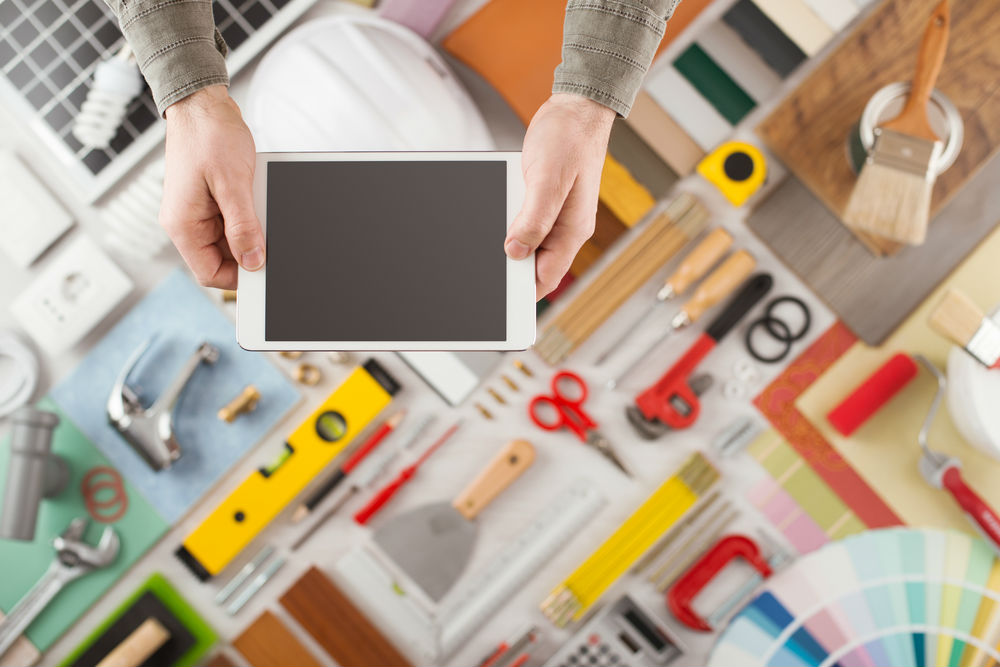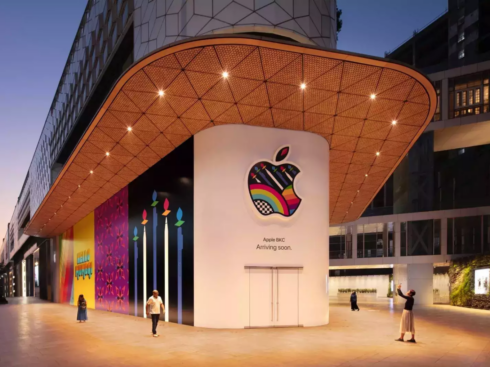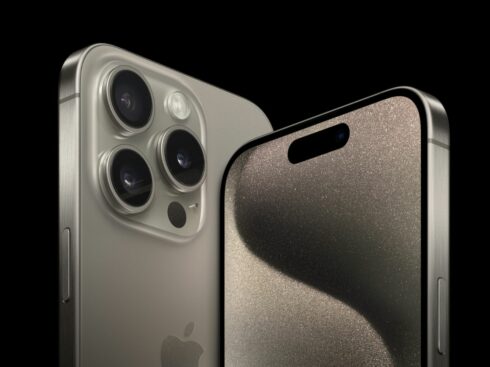You have a vision, inspiration and a name for your app. All you need is to get into the nitty-gritty details of designing the application. That is where your hiccups start because the nuts and bolts of production are easier perceived than performed.
So what makes an app or a website stand out? A designer will say the UI factor- since the time span to ‘wow’ user with your app is short. We often tend to judge a book by its cover and a mobile application is no different.
According to Anant Mendiratta, CEO and founder of WiseCalvin, the rule number one, however, is-
Designing a mobile application is all about space management. You have limited space on your screen and how well you manage within that limited space defines how good your application looks.
Now, without further ado, let’s get on to it.
Here are the 10 things to keep in mind while designing a mobile app:
#1 Infusing Your Brand Design
Your app should aim for instant recognition rather than to show off multiple designs. It should be ‘Ah! I know this brand’ kind of feeling.
Keep the app consistent with your brand whether you are getting the app designed or you are doing it yourself. How?
- The first screen that the user sees on opening your app should be your brand name and tagline.
- It should be neat, with a minimalistic design.
- Base your app’s design on this philosophy
This ensures that your app falls in line with the design elements, the buttons, the links that you provide are coherent with the web layout. For example, an eCommerce website selling clothes will look good with material design whereas that of an a game app will use more color and funky names for the levels.
Brittany Fleit, Marketing Lead at Kiip suggests that less is more with mobile design.
Due to the smaller screen space, colors and icons can mash together and be confusing. Design your app with plenty of white space, so the important elements pop and the main buttons are easy to locate.
#2 Clarity Should Precede Design
What is your key feature? It should be clear to the user, that easily lets him understand what they can do and what they can’t. You do not want to leave your user confused.
That is exactly what Jaq Andrews, Marketing & Technology Specialist at Zco Corporation does.
We always advise our clients to focus on simple, intuitive functionality rather than trying to cram in dozens of features. It’s easy to overwhelm mobile users, so an app should have one to three main functions. Once it’s established and has a user base, more functionality can be added; at that point, users will appreciate the new stuff and will tell others how handy or fun the app is.
Here is what we suggest you do-
The menus and related options should be simple and easy to understand even for a first-time user. For example, if you have multiple icons with different functions, you should make their functions clear.
Once you are clear on what you need to do, you will be able to add brevity to your app. Here are some points you need to be brief about-
- Terms & Conditions
- Usage
When it comes to showcasing your features, your user should feel compensated by the tangible or intangible value that has been added by the app.
See how this camera app- Camera Genius- is a winner when it comes to clarity. From instructions to terms of usage, it makes the user feel in control of the app.
#3 A/B Testing- The God Of All Things Successful
How do you know what works for you and what doesn’t? A cool app is only ‘cool’ when you have A/B tested and designed one that is well-liked by the users.
Before launch, you need to test on a bunch of real devices because what works on paper may not do so in practice.
Easy tip to A/B test your app:
- Before you launch your app, have your team interact with the app for 3-7 days.
- Observe which options work best, which buttons are redundant or necessary, which elements are working, which animations are better suited etc.
According to Peter Tanham, co-founder of SparkPage, in his article ‘How to Increase Your Mobile App Sales With A/B Testing’, you should do “Micro Testing”- a method that lets you test marketing elements like your icon, price, description etc… Then you can apply your findings to the app store.
How to create your first micro test in 3 steps:
1. Create an A/B Landing Page
2. Send Traffic to Test Your Pages
3. Analyze Your Results
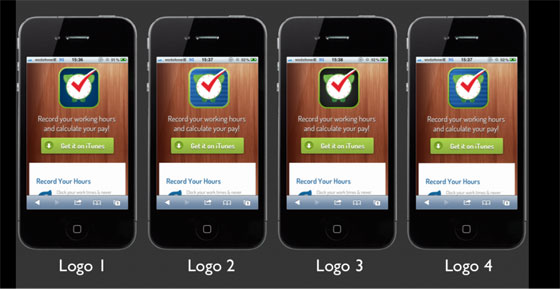 An example of logo split test. For a more detailed step-by-step instruction, you can read more here.
An example of logo split test. For a more detailed step-by-step instruction, you can read more here.
Usability testing is a must no matter how good you think your app looks or is designed. Just don’t expect people to look at the app the same way you do.
#4 Choose A Platform With Care
When there are a zillion different platforms out there, you need to choose one from the best. You should not simply port what you have to other platforms (iOS to Android, the Web to iOS, Android to BlackBerry etc).
Before you decide if you should launch in the iOS or Android or Blackberry platform, Alan N. Canton, Managing Partner at NewMedia Create, suggests a couple of things you should consider-
Choose the right framework- You might not want to use AngularJS for an application where Meteor or React might be better suited. Try to use open source products and generic code (i.e. javascript) as opposed to some of the very expensive (and often very good) proprietary products.
When to choose Open Source- Open source has a lot more ‘protection’ for you from the risk of a proprietary company going out of business. It is a good idea to use open source platforms that are ‘sponsored’ by large companies, for example, Bootstrap is by Twitter or Go is by Google.
Launching an app on both Android and iOS at the same time is never a good idea.
What you should do is choose one platform that you will launch first.
Why? If your launch is not concentrated on one platform (for the first launch) but on multiple platforms, you will simply extend your development time, increase costs, and delay your entry to the App Store. Therefore, before you decide choosing multiple platforms for the launch, you need to think about your timeline and priorities.
However, if your aim is to reach cross-platform for more visibility, it is essential that you adjust your app design as per varied platforms and the OS.
#5 Know Your Audience – Identify
Ask yourself – who is my audience? Identifying your audience in the initial stages makes it easy to plan the design and functionality around its preferences.
To have a quality audience, your app should make something easier, give valuable information, save money, or entertain.
Some questions you should be asking yourself-
Are you building a game for a certain demographic?
Is it for people in a particular country or region, or do you want your app to have global appeal?
Derric Clark, Game Program Professor at the University of Advancing Technology suggests that before you start the design, you should think about the audience and ask yourself this question-
Is the app for an 8-year-old boy or for a 45-year-old woman?
Why is getting your demographics right important? Because mobile apps are mostly funded by advertising and the game has to fit the demographic to make the marketing side work.
According to Tobias Negele, Lead Product Designer, www.STYLIGHT.com–
You have to uncover the biggest issue that the target demographic has when using similar apps, and work at nothing to solve it. Discover how and in what ways the target is using your app through various devices. You can get pretty creative here, too!
How can you start asking the right answer?
- Recruit a focus group of 5-6 people to send cultural probes to
- Create online communities (like WhatsApp) to capture user diaries
- Organize participatory workshops and let users experience the design and functionality live
Remember, you don’t need hundreds of users, only a few to ask the right questions to!
#6 Find Your Users: Plan Acquisition Campaigns
App users are acquired organically as well as through paid ads. A successful campaign in either will be a result of proper targeting.
This is one reason why Teri Gault, App Developer and CEO of The Grocery Game considers- ‘The back end is priority #1!’- from the perspective of the client/investor/business owner. She opines that developers and their clients get too enamored with UIs and wireframes, thus neglecting what is needed to actually run a business. Here is what she suggests-
Go big on the back end, admin dashboards and marketing tools. If you’ll have a merchant portal, don’t think you’ll expand on phase two. Spend the money now to make growth fast and easy, and service of content and customers seamless.
Coming back to acquisitions, let’s look at the paid and organic user acquisition.
For paid user acquisition, Facebook is a great place to start with as it is currently the most used online channel. However, you should also use search engine marketing and mobile ad platforms for paid acquisition.
For organic acquisition, you need to work on your App Store Optimization (ASO).
Why is ASO important? Because 63% of downloads come from general browsing in the App Store. Also, if you have a difference in versions, do not forget to mention what you’ve changed in this version of the app.
Let’s take an example of Pocket App. They launched for both Android and iOS, and have worked hard on their ASO. If anyone looks for an app that saves articles, Pocket App tops the list.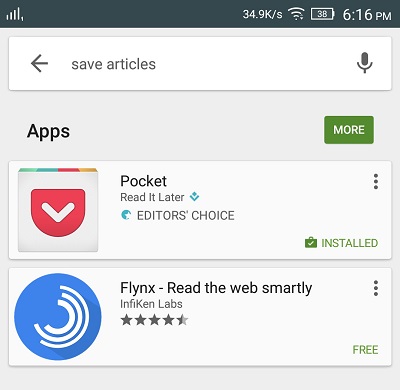

#7 Take Speed Into Consideration
Did you know showing an app perform faster or using a progress bar reduces the drop-off chances by 50%?
Yes, it does. Whether it is loading, downloading or accessing your page, how quickly you respond back to your user impacts your user interaction. This is because users have an expectation that their phones will respond quickly to their interaction.
According to ‘16 killer design tips for creating mobile apps’ by the CreativeBlog, users do not expect to wait!
 But how realistic is this? Sometimes there are certain interactions that take a longer time. So how will you deal with this?
But how realistic is this? Sometimes there are certain interactions that take a longer time. So how will you deal with this?
Here are two ways to fake it:
1. Respond to your user’s action (swipe, tap or click) with an animation. This will make the user feel that they have been acknowledged and their process is being executed.
2. Use a moving symbol like a glow, slide or bounce whenever a user refreshes a page. This shows the user that it is working.
Apart from that, you should also be communicative. For example, if your app is taking a lot of time to load or your page encountered a bug, you should notify the user like-
Yup. This is going to take a while. We are fixing it. Hold on
Talking about speed, Maryann Reid, User Experience Designer/Front-end Developer and Lead consultant at Glean Inc. gives her tip that Time-saving techniques are one of the most important steps in mobile design.
By that she means simple and clean designs where the user doesn’t have to click more than twice to get to the screen of their choice.
#8 How Customizable Is The App?
To give your users a sense of ownership, your app should be customizable and flexible to some extent according to their taste. This includes being able to customize the app color, fonts, and most importantly, the privacy settings (for social apps).
There are two important things you should keep in mind while making it customizable-
1. Make the customization choices compelling but ensure that it does not overwhelm the usefulness of the application.
2. Incorporate choices like changing the skin, color and different parts of the application.
Nitish Kumar, SEO expert at Workouttrends.com feels the need for customization although he says, till date he hasn’t come across one with a considerable customization option. Here is what he has to say-1
Developers should be working on making the apps with a custom dashboard where the user can eliminate the clutter and keep only the features that they want to keep. This will enable them to embed the selected features in the home page/ main page or something like a night mode- where the apps ambiance changes or auto -adjusts.
Also, you should opt for an ‘Exit app’ option. Why? People (and you) don’t like it when an app runs in the background and consumes RAM.
#9 A Must- Social Media Integration
The new buzz in 2015 is that Social Influence has overtaken the Brand Value. So, to make your app lovable and self-sustaining, integrating major social media sites into your app is a must.
The benefits? This makes it possible for your app users to suggest/share their accomplishments on the app to their loved ones on a prevalent stage. For example, consider Skitch app, a user-friendly editing app that integrates with social media on editing the picture.
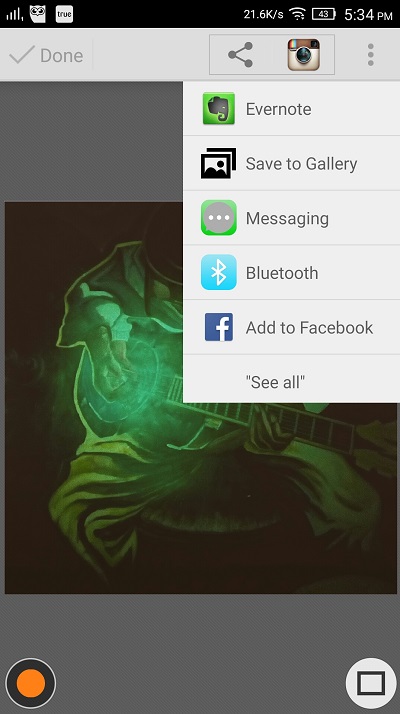 This way, it gives you a greater scope for reach with people that are generally out of your range.
This way, it gives you a greater scope for reach with people that are generally out of your range.
#10 Get Your App Reviewed By A Third Party
To give an unbiased review of your app, you must get your app reviewed by an anonymous user who knows nothing about your app. When you get it reviewed by a user with a different mindset from yours, you will get you answers to your doubts.
We asked Aaron Watkins, President at Appency (App marketing and consulting firm), what he thought about it, and he suggested that you should have impartial third party reviewers (not friends, relatives, employees, etc) do a deep dive with your app idea and/or beta app.
Too many times have we had clients come to us for app marketing where we were the first people, other than the developer, to take a look at the business model and niche that the app is supposed to fill. You should look at the app not just for the idea, but for the execution. There are many great app ideas out there, but unless they are executed perfectly they will not succeed.
Reviews are one of the solid feedback for making your app more executable.
Here are a few questions you should ask while reviewing the app:
1. What is the purpose of this app?
2. Are the look and the UI of the theme coherent with each other?
3. Will this app keep me engaged even if I use it the whole day?
4. Does this app give importance to UX before UI?
Conclusion
These are a few of the unmissable ground-rules to get you started on mobile app designing.
If you are confused on where to start, simply start with the design guidelines of the systems. For instance, Android, iOS, and Windows have a detailed design guideline with specific information.
I will be happy to hear from you more ideas that you feel are important while designing an app. Do leave a comment.



